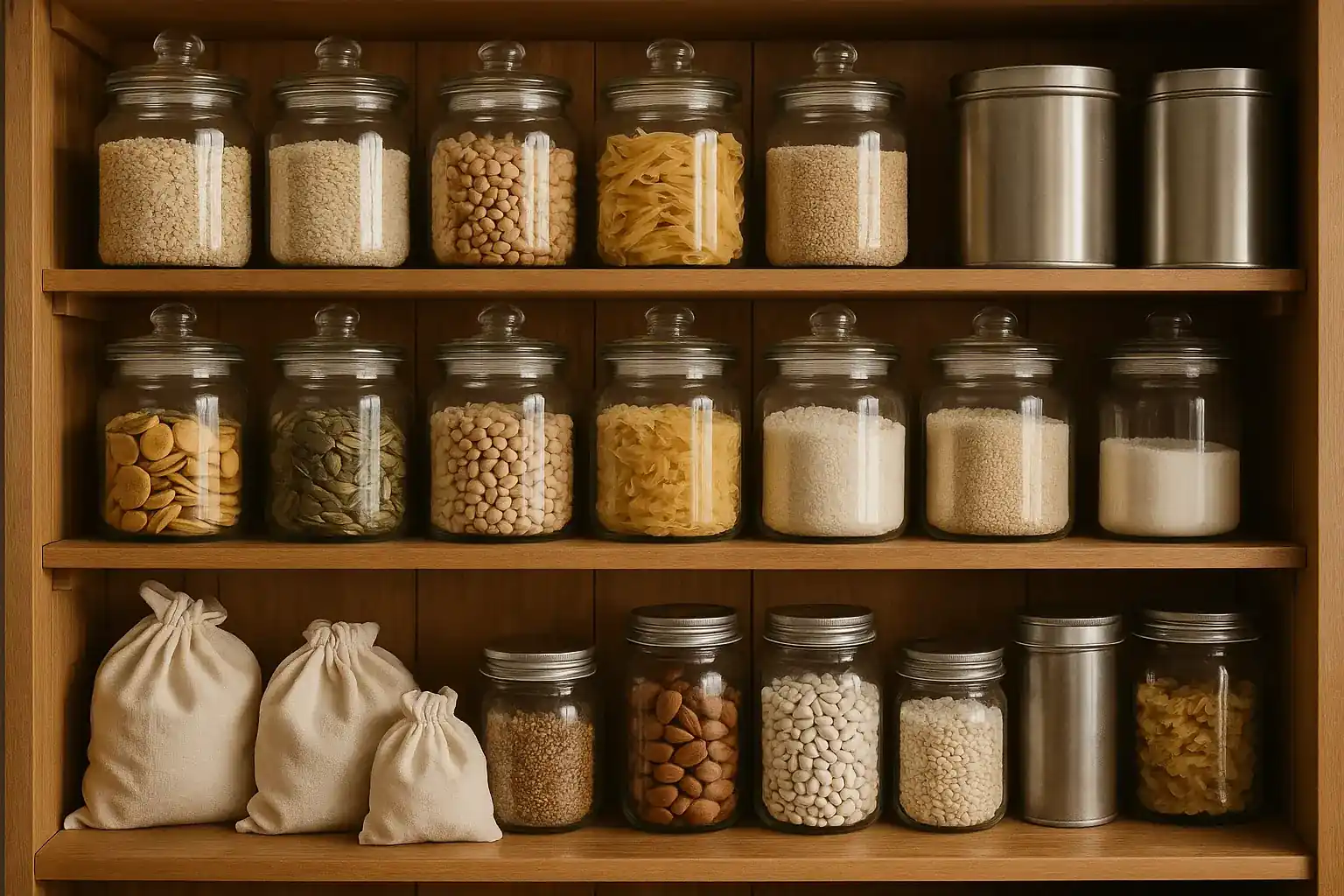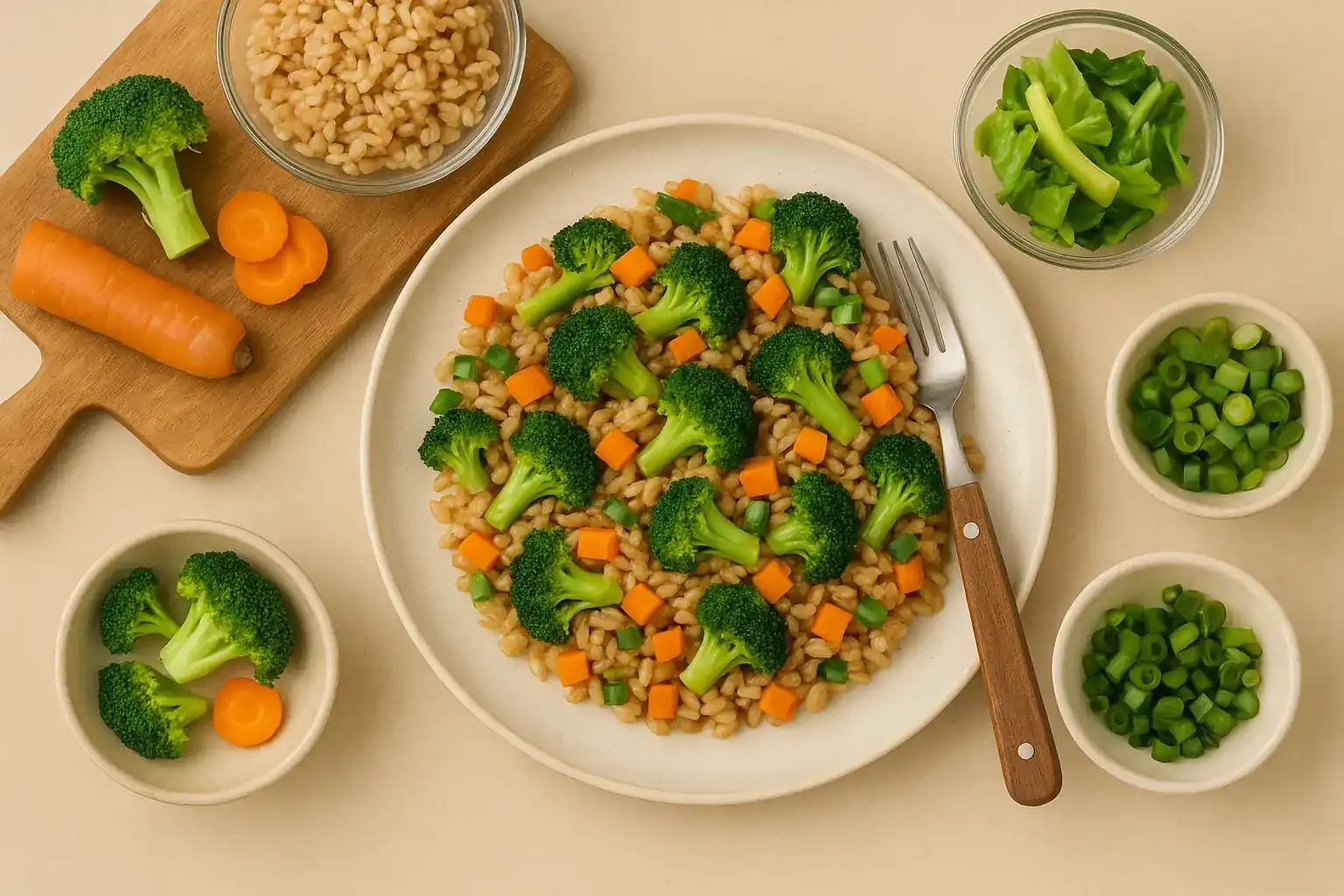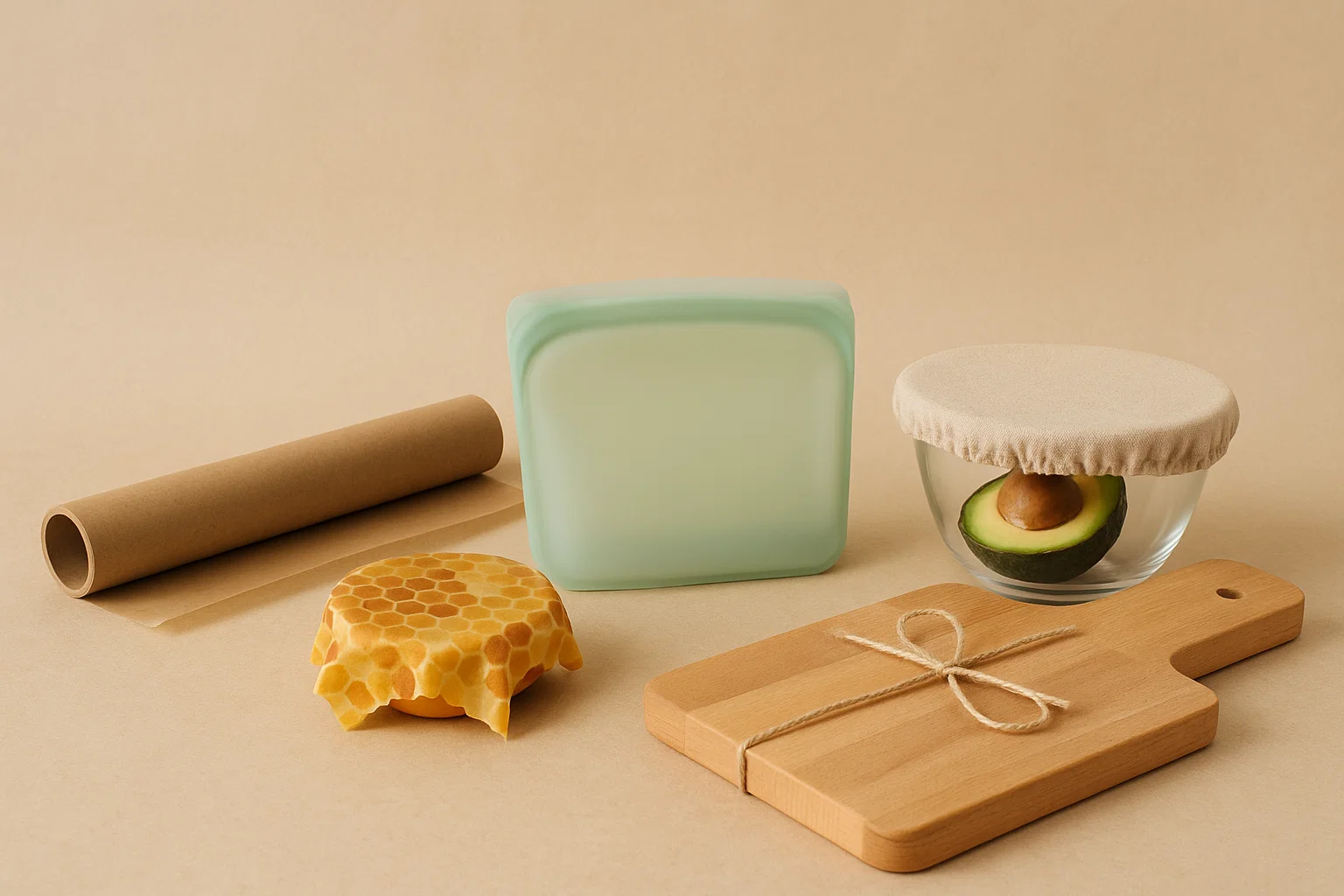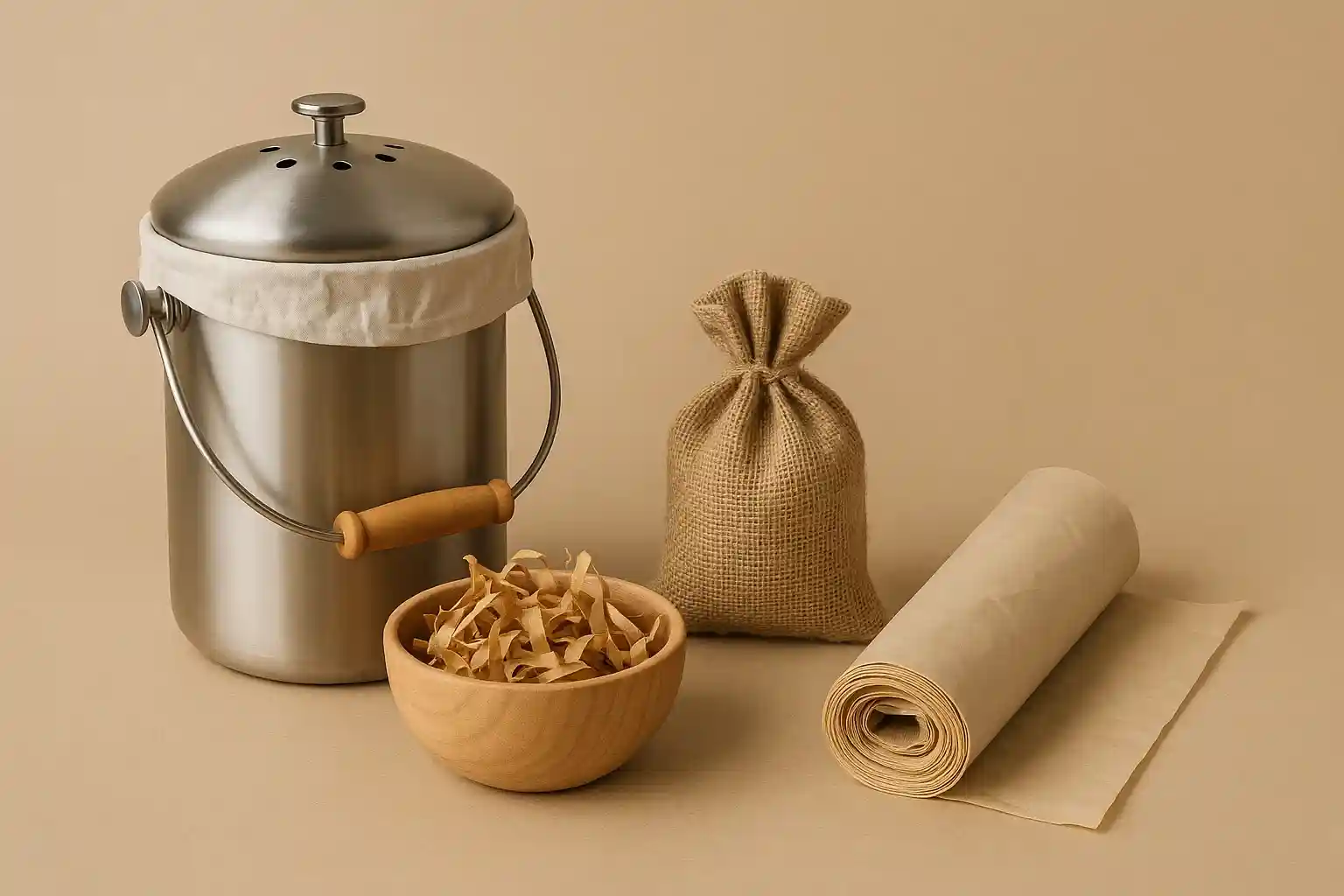Beyond the Bin: Eco-Friendly Kitchen Storage - Glass, Silicone, or Stainless Steel?
Open your kitchen cupboards or drawers. Chances are, you'll find a collection of plastic food storage containers. They're ubiquitous, convenient, and often affordable. However, their widespread use contributes significantly to plastic waste, and concerns linger about potential chemical leaching, especially with older or lower-quality plastics.
As we strive for more sustainable kitchens, many of us are looking for durable, safe, and eco-friendly alternatives to single-use wraps and conventional plastic containers. Glass, silicone, and stainless steel have emerged as leading contenders, each offering unique benefits. But with multiple options, how do you decide which is best for your needs and the planet?
It's not a one-size-fits-all answer! The "best" choice often depends on how you plan to use it. Let's break down the pros and cons of each material to help you make informed decisions for a greener kitchen.
Why Ditch Conventional Plastic Storage?
Moving away from traditional plastic containers and single-use wraps offers several benefits:
- Reduce Waste: Reusable options eliminate the need for constant repurchasing and discarding of single-use plastics.
- Durability: Quality alternatives last much longer than many flimsy plastic containers.
- Safety: Avoid potential concerns about chemicals like BPA or phthalates found in some plastics, which can leach into food.
- Hygiene: Non-porous materials like glass and stainless steel don't stain, retain odors, or harbor bacteria like some plastics can over time.
- Sustainability: Choosing materials with lower production impacts and higher recyclability is better for the planet.
Now, let's compare the top eco-friendly materials:
1. Glass Storage Containers
Often seen as the gold standard for food safety and purity.
- Pros:
- Non-Reactive & Safe: Glass is non-porous and doesn't leach chemicals, stain, or absorb odors. Your food tastes like your food!
- Durable (if not dropped): High-quality tempered glass is robust and designed for daily use.
- Temperature Versatility: Safe for freezer, refrigerator, oven (bases only, typically without lids), and microwave. Great for heating leftovers.
- Visibility: You can easily see what's inside without opening, reducing forgotten food waste.
- Infinitely Recyclable: If a glass container breaks (bases, not always lids), the glass is widely recyclable.
- Cons:
- Breakable: The obvious drawback. A drop can mean shattered glass.
- Heavy: Less ideal for packing lightweight lunches or backpacking.
- Can be More Expensive: Upfront cost is often higher than plastic.
- Sustainability Score: High, especially considering safety, longevity, and recyclability. Made from abundant natural resources (silica/sand).
2. Food-Grade Silicone Storage
A flexible and lightweight alternative, often used for bags, lids, and sometimes containers.
- Pros:
- Flexible & Lightweight: Great for squeezing into tight spaces or packing snacks. Silicone bags are very versatile.
- Durable & Unbreakable: Bounces when dropped! Won't shatter or dent.
- Wide Temperature Range: Most food-grade silicone is safe for freezer, microwave, and oven (check product specs). Excellent for freezing portions or steaming vegetables in bags.
- Good Sealing: Creates airtight seals, especially silicone lids and bags.
- Non-Reactive: Food-grade silicone is considered inert and doesn't leach chemicals into food. Doesn't retain odors as easily as plastic, though some strong smells/grease might linger if not washed promptly.
- Cons:
- Not Standard Recyclable: Silicone is recyclable but requires special recycling facilities, which are not widely available in all municipal programs.
- Can be Pricey: Especially high-quality, durable silicone bags or containers.
- Quality Varies: Ensure you are buying food-grade silicone from reputable brands.
- Can Feel Different: Some people don't like the texture or how it can sometimes feel slightly greasy even when clean.
- Sustainability Score: Moderate-to-High. Made from silica (sand), more durable and safer than plastic, but end-of-life recycling is a challenge compared to glass or steel. Excellent for replacing plastic bags and wrap.
3. Stainless Steel Storage Containers
Robust, lightweight, and classic.
- Pros:
- Extremely Durable & Unbreakable: Will withstand drops and bumps. Ideal for packed lunches and travel.
- Lightweight: Lighter than glass, making it portable.
- Non-Reactive & Safe: Doesn't leach chemicals, stain, or retain odors.
- Widely Recyclable: Stainless steel is a valuable and easily recyclable material in most municipal programs.
- Temperature Versatility (Careful with Lids): Safe for freezer and oven (bases only, ensure lids are removed if not oven-safe).
- Cons:
- Not Microwave Safe: Metal cannot go in the microwave. This is a key limitation.
- Can't See Contents: Requires opening the container to see what's inside.
- Can Dent: While unbreakable, they can get dented if mistreated.
- Can be Expensive: High-quality sets are an investment.
- Sustainability Score: High. Extremely durable and infinitely recyclable. Resource extraction is required for production, but their longevity and end-of-life recyclability are strong points.
Making Your Choice: Which Material is "Best"?
As you can see, there's no single winner – the best choice depends on your lifestyle and how you plan to use the containers:
- If You Frequently Reheat in the Microwave/Oven: Glass is probably your primary workhorse.
- If Portability, Durability (no breakage!), and Lightweight are Key (e.g., Lunchboxes, Picnics): Stainless Steel is an excellent choice.
- If You Need Flexible Storage, Airtight Seals for Bags/Covers, or Freezer Storage: Silicone (especially bags and lids) is incredibly versatile.
- If Visibility is Important: Glass allows you to see contents easily.
- If Ultimate Durability & Recyclability are Top Priorities: Stainless Steel and Glass are strong contenders.
Many people find a combination of these materials works best! A mix of glass containers for fridge storage and reheating, stainless steel for packed lunches, and silicone bags and lids for flexible storage, freezing, and covering bowls.
Beyond the Material: Other Sustainable Storage Tips
Choosing the right material is a huge step, but also remember:
- Use What You Have: Before buying new, see if you can repurpose existing jars (like jam or peanut butter jars) or containers.
- Proper Care: Follow cleaning instructions to ensure your containers last as long as possible.
- Buy Quality: Invest in well-made containers from reputable brands – they'll stand the test of time.
- Consider End-of-Life: Know how to recycle the material in your area when the container eventually reaches the end of its usable life.
Switching from conventional plastic to durable alternatives like glass, silicone, and stainless steel is a significant step towards reducing waste and creating a healthier kitchen. Evaluate your needs, choose the materials that fit your lifestyle, and enjoy the benefits of a more beautiful, functional, and sustainable storage system.
Related Blogs

Say Goodbye to Single-Use: 10 Easy Swaps for a Plastic-Free Pantry
Insights on 10 easy swaps for a plastic-free pantry in a sustainable way.

A Week of Delicious Transformations: Zero-Waste Recipes Using Your Leftovers
Insights on a week of zero-waste recipes using leftovers in a sustainable way.

Beyond the Foil: Reusable Alternatives for Sustainable Baking and Food Storage
Opt for reusable silicone baking mats, covered bakeware, and beeswax wraps instead of aluminum foil.

Brew Better, Waste Less: Sustainable Alternatives to Single-Use Coffee Pods
Lower waste and enjoy better flavor with reusable pods, French presses, or Moka pots.

Compost Without the Carry-On: Sustainable Alternatives to Store-Bought Compost Bags
Reduce unnecessary plastic in composting with newspaper liners, bag-free bins, or DIY liners.

Compost Happens (Even in Apartments!): Your Beginner's Guide
Practical advice and actionable tips for composting 101.
Stay in the Loop
Get tips and insights tailored to your interests — no spam, just sustainability.